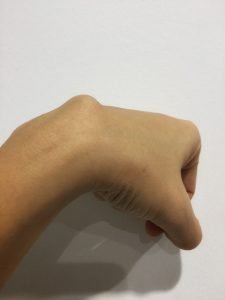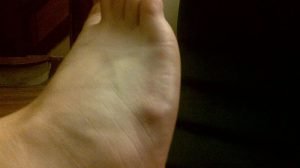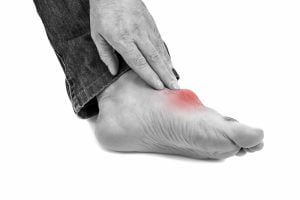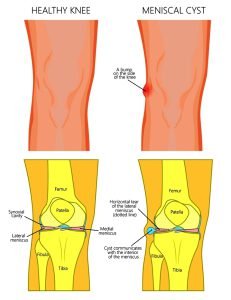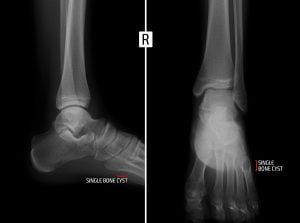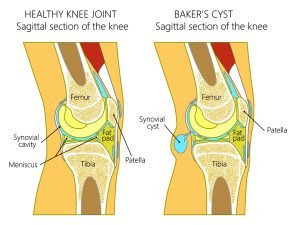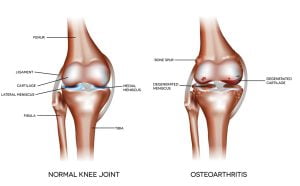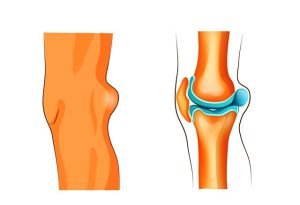Browsing: Bone Cyst Graphics
Comprehensive Information, Resources, and Support on Bone Cyst
Bone cysts are fluid-filled holes that develop in bones. They generally affect children and teenagers. They’re not usually serious, but may sometimes require treatment. Occurrence of a bone cyst within the hand is rare.
The image shows aneurysmal bone cyst through a high magnification lens. Aneurysmal bone cysts (ABCs) are benign bone lesions that occur mainly in the pediatric population and can cause local pain and swelling. It is a blood-filled lesion in the bone that tends to expand. [Image used under Creative Commons License from Wikimedia]
A ganglion cyst is a round, sac filled with a jellylike fluid that originates from a tendon sheath or joint capsule. These types of cysts are generally benign soft-tissue masses. It mostly occurs on the wrist or hand, but it can also appear on the ankle or foot. These cysts can compress a nerve which can cause pain. [Image used under Creative Commons License from Wikimedia]
Gout is a painful condition and mostly affects joints and kidneys. Gout is the deposition of uric acid crystals in the joints due to hyperuricemia. Uric acid deposition in kidneys can cause kidney stones. Gout in joints lead to swelling or inflammation. Joint damage and the presence of tophi (uric acid crystal that displace bone and produce cysts) can be detected through X-ray. Increased uric acid levels can cause the formation of bone cysts and tumors. Bone cysts appear as mass-like lesions filled with fluid (in joints) and cause damage to bones if ignored.
Knee joint is the junction of three bones i.e. femur, tibia and patella. Articular cartilage covers the ends of these three bones in the knee joint and allows the knee to move smoothly. Menisci are two crescent-shaped discs of connective tissue that separate the bones of the knee between the tibia and femur, on the outer and inner sides of each knee. They act as shock absorber for lower part of the leg and enhance stability. Bone cysts, known as meniscal cysts, are commonly seen near the lateral meniscus (outside of the knee). They are associated with a specific type of meniscal tear called a horizontal cleavage tear.
A foot cyst or a toe cyst or an ankle cyst is a benign fluid-filled space that develops inside the bone attached to joint capsules of the foot or the toe or the ankle. They do not have a regular shape or size and are generally mobile in nature. A bone specialist or a radiologist will do X-rays of the affected area to look for the damage to the bone or joint or nearby locations. An ultrasound of the foot may also be needed. Though it is not commonly recommended but sometimes an MRI of the foot may also be done.
Bone cysts are fluid filled lesions in joints of arms, thighs, spine, knee, etc. Knee is one of the most complex joints in the body and several bone disoders are related to it such as gout bursitis, knee effusion, baker’s cyst, etc. In healthy bones, if excess of knee joint fluid is collected, it is compressed by the body weight between the bones of the knee joint. This fluid is trapped and separated from the joint as a fluid-filled sac protruding at the back side of the knee in the form of a lump known as Baker’s cyst.
Knee is a synovial hinge between three bones: the femur, tibia, and patella. Between the tibia and the femur bone are two crescent-shaped pads of cartilage known as lateral meniscus and medial meniscus that reduce friction and disperse the weight of the body across the joint. Problems associated with knee are arthritis, knee cartilage tears, osteoathritis, rheumatoid arthritis, etc. Formation of bone cyst is another problem which results in the development of fluid filled sac in a person’s joint. Osteoarthritis and rheumatoid arthritis can lead to cysts. It is observed that these conditions cause bumps on the back of the fingers which appear as cysts.
A popliteal cyst, Baker’s cyst, is a fluid-filled swelling which is defined as a lump at the back of the knee. Baker’s cyst can be painful and leads to tightness and restricted movement. Another name for baker’s cyst is popliteal cyst. Most common causes of baker’s cyst are damage to the knee’s cartilage, gout, arthritis of the knee, rheumatoid arthritis, etc. It is observed that baker’s cysts are more common in women than in men.Baker’s cyst can be easily treated with physcal therapy or corticosteroid treatment. Fluid draining technique is also preferred for some cases.
ADVERTISEMENT




